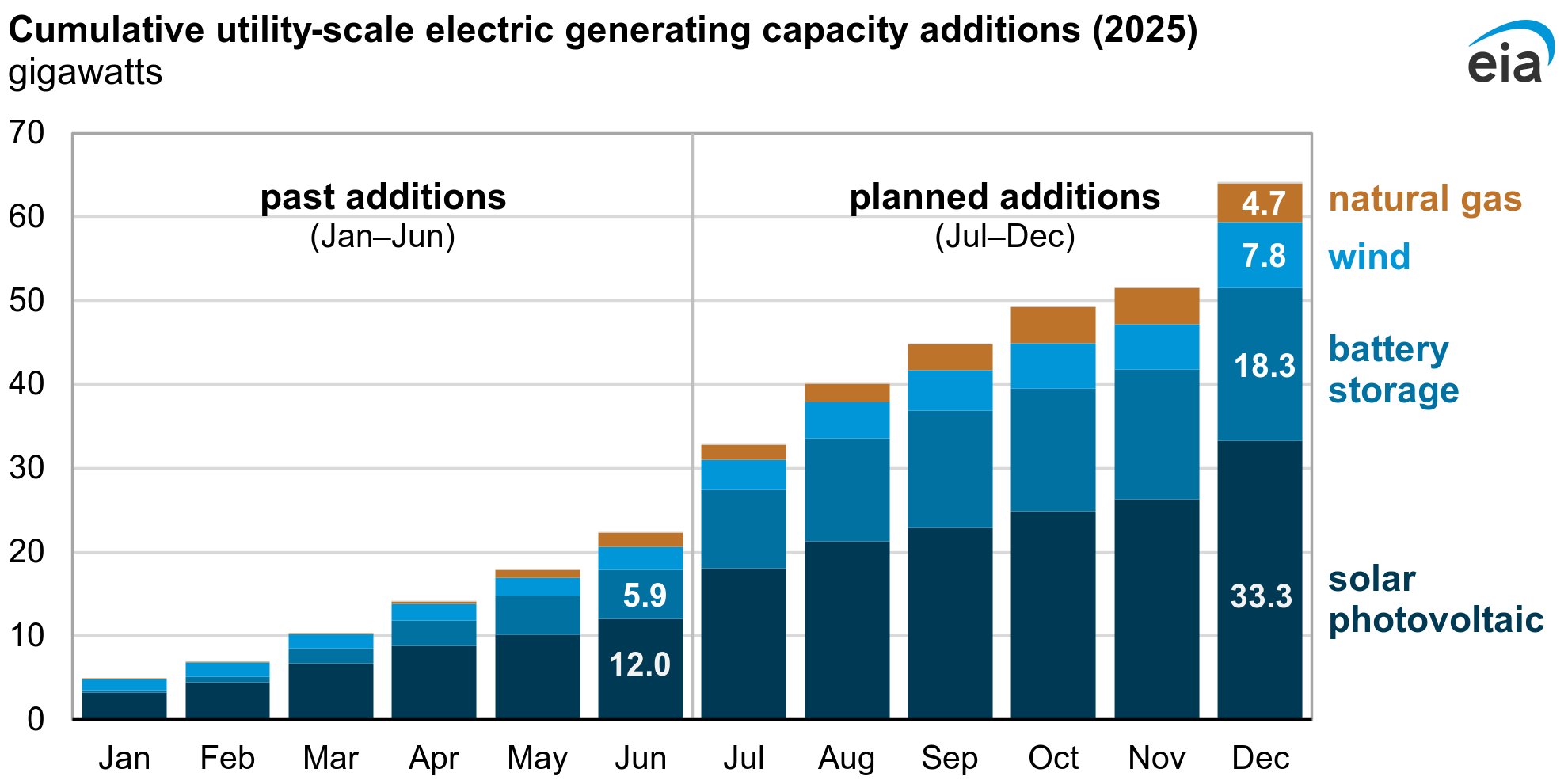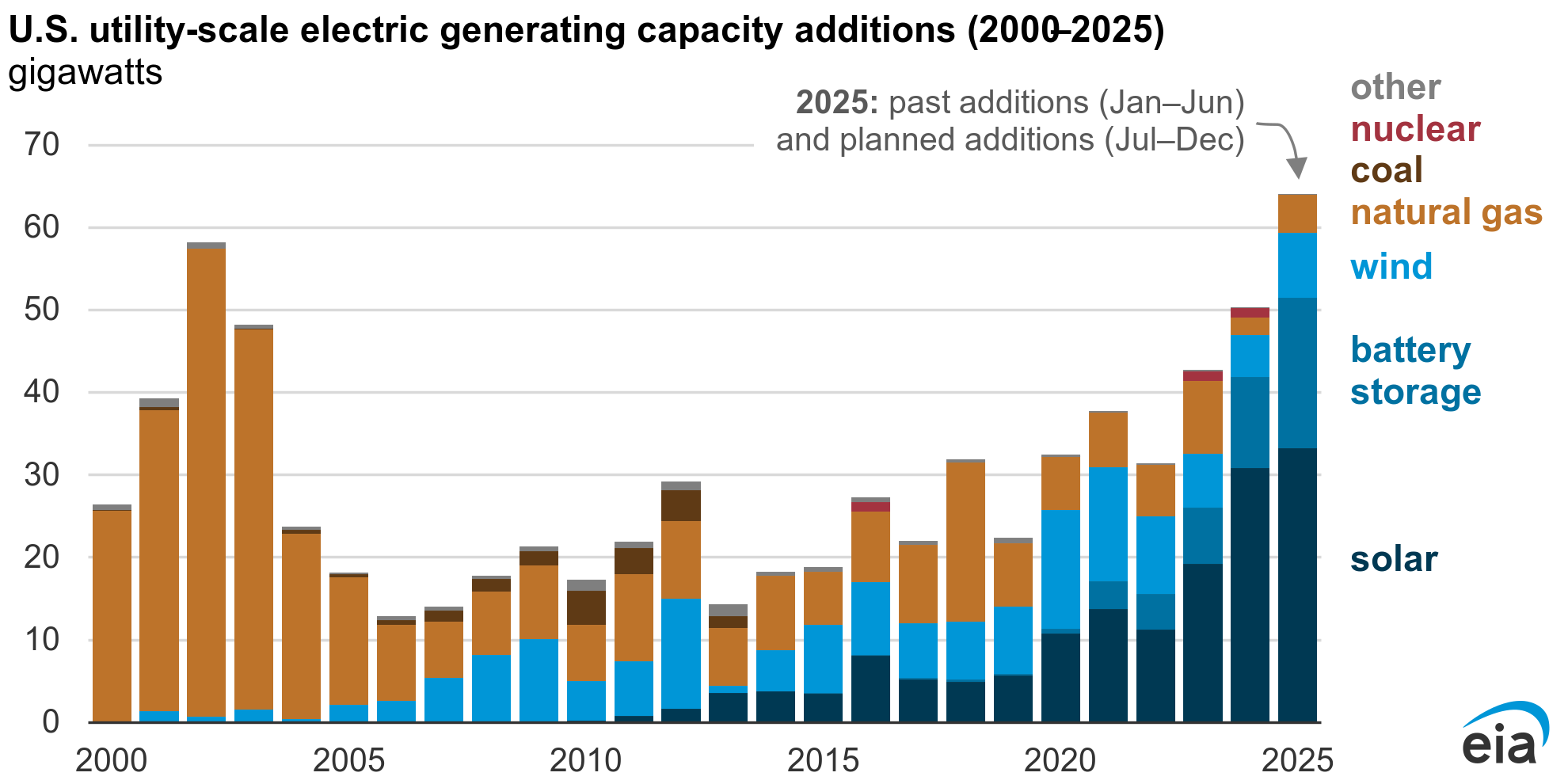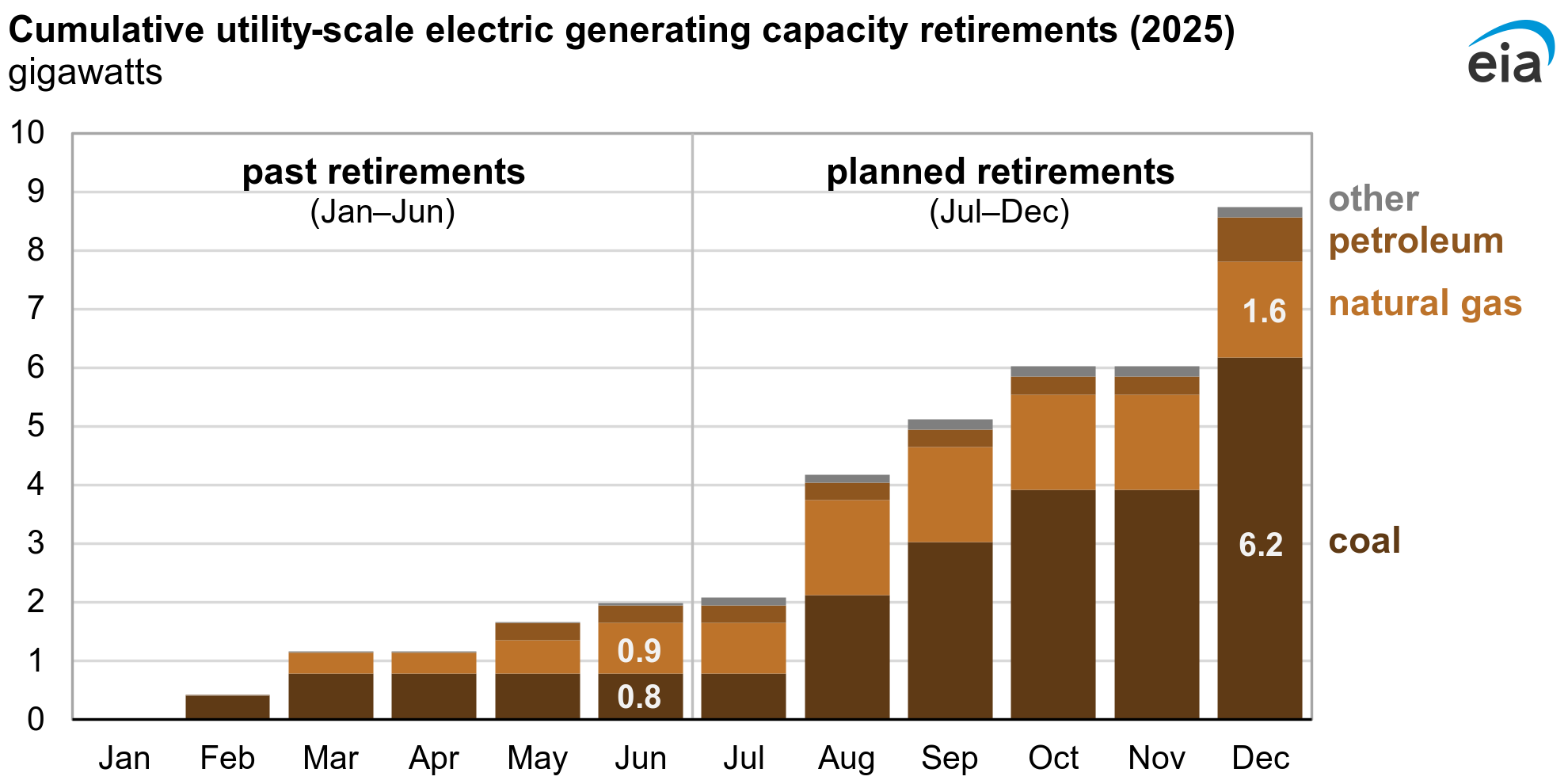Record-breaking year ahead for US power generation with solar leading the way
The United States is set to achieve its largest annual increase in electricity generation capacity in more than two decades. According to the US Energy Information Administration (EIA), developers plan to add 64 gigawatts (GW) of new utility-scale capacity in 2025, surpassing the previous record of 58 GW set in 2002.
At the heart of this expansion is solar power, supported by rapidly growing battery storage systems. Together, they are reshaping the country’s energy mix and signalling a decisive shift away from fossil fuels.
Solar power takes centre stage
Solar power is expected to provide more than half of the new electricity capacity added in 2025. Developers have already installed 12 GW in the first half of the year, with another 21 GW planned before year-end. If achieved, this would mark 33 GW of solar capacity additions in a single year — the largest annual increase in US history.
This solar boom demonstrates how renewable energy investment in the US is outpacing fossil fuels, offering cleaner, cheaper and more resilient electricity for homes and businesses.

Texas emerges as the new solar powerhouse
Texas, traditionally associated with oil and gas, is now becoming the epicentre of US solar growth. By mid-2025, the state had already brought 3.2 GW of solar capacity online, with a further 9.7 GW expected before year-end. That means nearly half of all new US solar capacity in 2025 will come from Texas alone.
Why Texas? The answer lies in its abundant sunshine, vast land availability, and soaring electricity demand. The state’s shift illustrates how solar energy in Texas is no longer just about sustainability — it is about meeting demand quickly and affordably.
Battery storage: securing a reliable grid
While solar power grabs headlines, battery storage capacity is the silent enabler of this transformation. Developers installed 5.9 GW of storage in the first half of 2025, mainly in California and Arizona. By the end of the year, Texas alone is expected to add 7 GW of storage.
These systems are crucial because they allow excess solar energy to be stored during the day and released at night, stabilising the grid. For SEO optimisation: battery storage in the US is now becoming as important as the renewable energy generation itself.
The slower growth of wind and gas
Wind power and natural gas remain part of the US energy mix, but their contributions in 2025 look modest compared with the explosive growth of solar. While new wind projects are still being built, particularly in the Midwest and along coastal regions, the pace has slowed. Rising costs for turbines, long permitting processes, and transmission bottlenecks have all dampened momentum. As a result, wind is adding capacity, but at nothing like the scale seen during its peak years in the late 2010s and early 2020s.
Natural gas, meanwhile, continues to feature in new electricity capacity, but its role is shifting. Developers are no longer relying on gas as the dominant source of new generation. Instead, it is being added in smaller, targeted projects to provide reliability and balance alongside renewable resources. Gas plants remain attractive for their ability to provide flexible power when demand is high, but they are increasingly seen as a support technology rather than the engine of growth.

This slower pace for both wind and gas reflects a broader trend in the US energy market: the investment case for renewables has become stronger. Falling costs for solar modules and batteries, combined with federal incentives, are pulling capital away from fossil fuel projects. At the same time, communities and regulators are under greater pressure to prioritise low-carbon generation.
In effect, wind and natural gas are being overtaken by solar as the technologies of choice. They are no longer driving the expansion of the grid but instead playing complementary roles. The U.S. electricity system is entering a phase where solar power and battery storage dominate growth, while wind and gas fill gaps rather than set the pace.
Power plant retirements: a mixed picture
On the other side of the ledger, 8.7 GW of retirements had been scheduled for 2025, mostly coal-fired plants. Yet, only 2 GW have been retired so far. Some closures have been delayed or cancelled, including units at the Brandon Shores coal plant in Maryland and natural gas units in Texas.
If retirements proceed, coal would account for 71% of closures, with natural gas making up 19%. This demonstrates that while the energy transition is accelerating, legacy infrastructure still complicates the path forward.

Why this matters
- Climate impact
More solar and battery storage means lower carbon emissions and cleaner air. Every gigawatt of solar added helps reduce reliance on coal and gas, both major contributors to climate change. - Energy security
With storage expanding alongside solar, the US grid becomes more resilient to demand spikes, heatwaves, and outages. - Economic growth
Investment in solar and storage is creating thousands of jobs, particularly in states like Texas, boosting local economies and diversifying their energy portfolios. - Global leadership
By setting records in clean energy capacity additions, the United States positions itself as a leader in the global renewable energy transition.
The takeaway
The US is experiencing its most transformative year for electricity generation in over 20 years, driven by a surge in solar energy and backed by large-scale battery storage. Texas, once defined by oil and gas, now finds itself at the forefront of this solar revolution.
For policymakers, businesses, and households, the message is clear: the clean energy transition is no longer a distant goal — it is happening now, at record-breaking speed.





